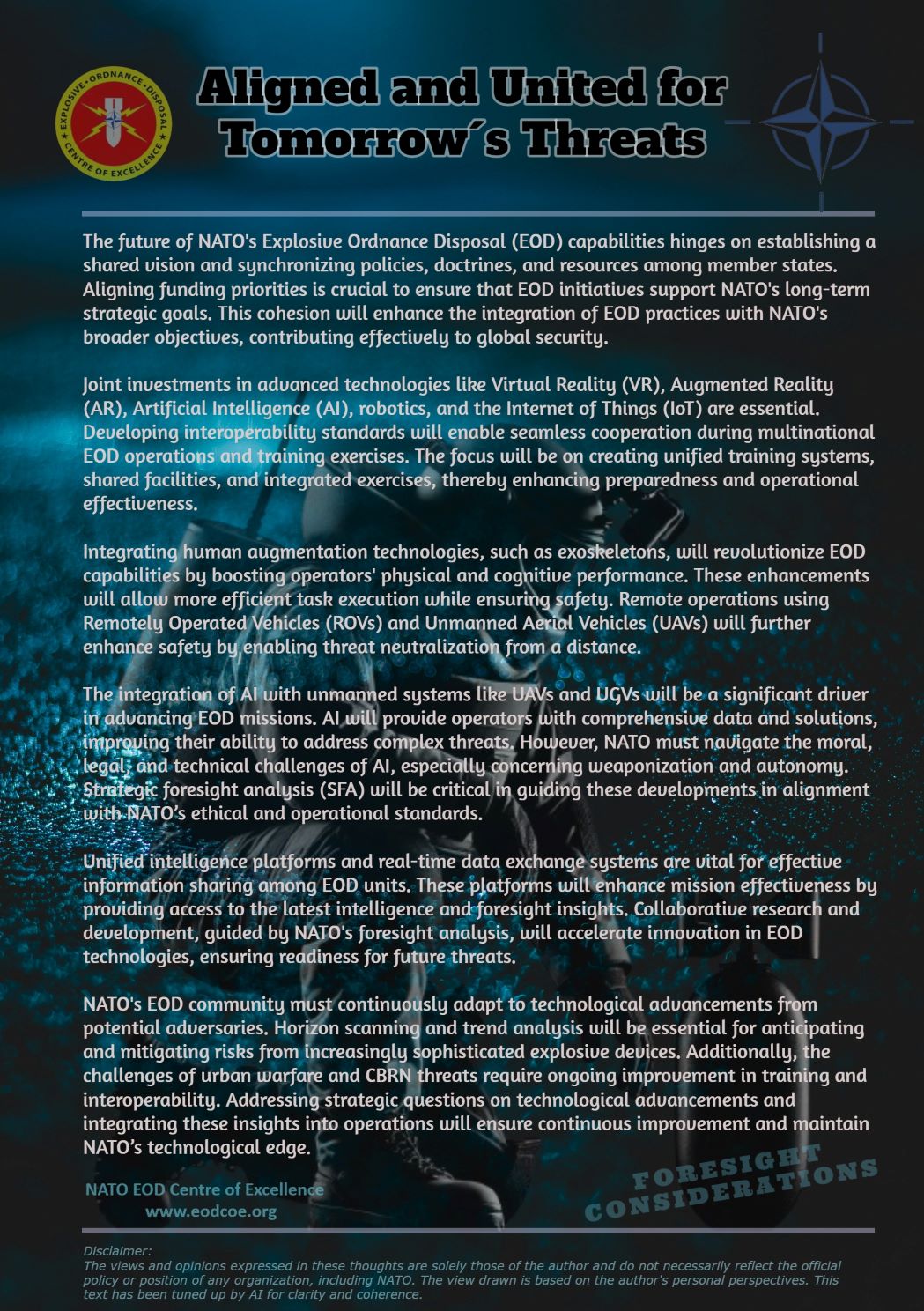
Aligned and United for Tomorrow’s Threats
The future of NATO's Explosive Ordnance Disposal (EOD) capabilities hinges on establishing a shared vision and synchronizing policies, doctrines, and resources among member states. Aligning funding priorities is crucial to ensure that EOD initiatives support NATO's long-term strategic goals. This cohesion will enhance the integration of EOD practices with NATO's broader objectives, contributing effectively to global security.
Joint investments in advanced technologies like Virtual Reality (VR), Augmented Reality (AR), Artificial Intelligence (AI), robotics, and the Internet of Things (IoT) are essential. Developing interoperability standards will enable seamless cooperation during multinational EOD operations and training exercises. The focus will be on creating unified training systems, shared facilities, and integrated exercises, thereby enhancing preparedness and operational effectiveness.
Integrating human augmentation technologies, such as exoskeletons, will revolutionize EOD capabilities by boosting operators' physical and cognitive performance. These enhancements will allow more efficient task execution while ensuring safety. Remote operations using Remotely Operated Vehicles (ROVs) and Unmanned Aerial Vehicles (UAVs) will further enhance safety by enabling threat neutralization from a distance.
The integration of AI with unmanned systems like UAVs and UGVs will be a significant driver in advancing EOD missions. AI will provide operators with comprehensive data and solutions, improving their ability to address complex threats. However, NATO must navigate the moral, legal, and technical challenges of AI, especially concerning weaponization and autonomy. Strategic foresight analysis (SFA) will be critical in guiding these developments in alignment with NATO’s ethical and operational standards.
Unified intelligence platforms and real-time data exchange systems are vital for effective information sharing among EOD units. These platforms will enhance mission effectiveness by providing access to the latest intelligence and foresight insights. Collaborative research and development, guided by NATO's foresight analysis, will accelerate innovation in EOD technologies, ensuring readiness for future threats.
NATO's EOD community must continuously adapt to technological advancements from potential adversaries. Horizon scanning and trend analysis will be essential for anticipating and mitigating risks from increasingly sophisticated explosive devices. Additionally, the challenges of urban warfare and CBRN threats require ongoing improvement in training and interoperability. Addressing strategic questions on technological advancements and integrating these insights into operations will ensure continuous improvement and maintain NATO’s technological edge.